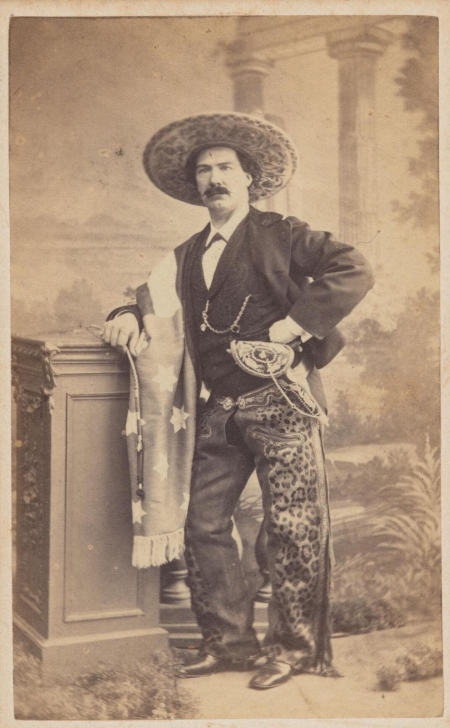
Tess Kelley, Harvard College ’23, reports on a recent workshop at Houghton Library.
Harvard Library’s collections are home to more than two million photographs. Looking → Seeing: Take a Dive into Historical Photography Collections, a recent workshop co-hosted by Houghton Library and the Fine Arts Library, offered participants a chance to learn about early photography as well as sharpen their photography analysis skills.
Lilli Keaney, Houghton’s Harrison D. Horblit Photograph Librarian, began the workshop by displaying a black-and-white image of an ocean, captured by French photographer Gustave Le Gray. Keaney asked participants to share what came to mind when viewing the photo, and a seemingly unassuming image turned tense, turbulent, and peaceful in different sets of eyes.
The variation in our responses, Keaney explained, provides a glimpse into the behind-the-scenes work of librarians. In an archive as vast as Harvard’s, cataloging librarians are caught in the tension between labeling a photo in a way that is findable to the subjective viewer but still objective enough that it does not make assumptions about the work.
The image also held a secret: What appeared to be one picture was actually two, as the ocean and the sky were separate photos later combined by Le Gray to produce one image. Co–presenter Joanne Bloom, Photographic Resources Librarian at the Fine Arts Library, pointed out that although we often think of photography as an objective medium, photographers have been manipulating their craft for over a century. Just as librarians are concerned with objectivity and subjectivity when cataloging photos like this one, so might Le Gray have been when deciding how to create this image.
Participants then had the option to choose an image and its accompanying library documentation to analyze for themselves. Ranging from a shot of the Cairo skyline to a picture of a female boxer (or possible vaudeville performer), many of the images were approaching 150 years old. Some were landscapes, while others were staged portraits. They represented multiple different types of early photography. “I didn’t pick the picture — the picture picked me,” one participant laughed.
Keaney invited us to compare what could be learned from the image to what could be learned from its documentation, and to consider why the image might have been taken in the first place. Participants dove into their chosen images, some using magnifying glasses or even their phones to take note of tiny details. They often remarked that despite finding intriguing details, there were still many unknowns left unanswered by the photo and its documentation.

The photo I chose captured two women sitting on the shores of a beach, posing comfortably with each other. I then learned from the documentation that I had been fooled: what I thought was a beach was actually a studio setup. I had no clues revealing who these women were or what their relationship was, save a woman’s name I found etched on the back of the photo. I was left wondering if “Jenn” was one of the women in the photograph, or maybe even its intended recipient.
Eventually, the workshop transitioned to a Q&A, with participants sharing images around the table and highlighting details they found interesting with their neighbors. Their questions provided insight into the many types of photography available during the medium’s early days in the 1800s. Tintypes, such as my photo, were a type of image typically taken of the average person since they were less expensive to produce, as Bloom explained. Their widespread accessibility, however, often means that they are not attributable back to specific people when cataloged in today’s libraries. On the other hand, photography methods such as daguerreotypes were usually only taken of wealthier people, explained Keaney.
A crowd favorite of the afternoon was a puzzling photo of a man posing in leopard print chaps. His rugged clothing contrasted with the staged background of his photograph; participants remarked not only on his curious fashion sense but also what the photo was meant to convey about his subject. While an hour ago the photo might have been a brief curiosity, armed with fresh analytical eyes it became a mystery to unpack.
Curious about other hands-on workshops offered by our libraries? Learn more about upcoming workshops, and check out future events at Houghton Library.